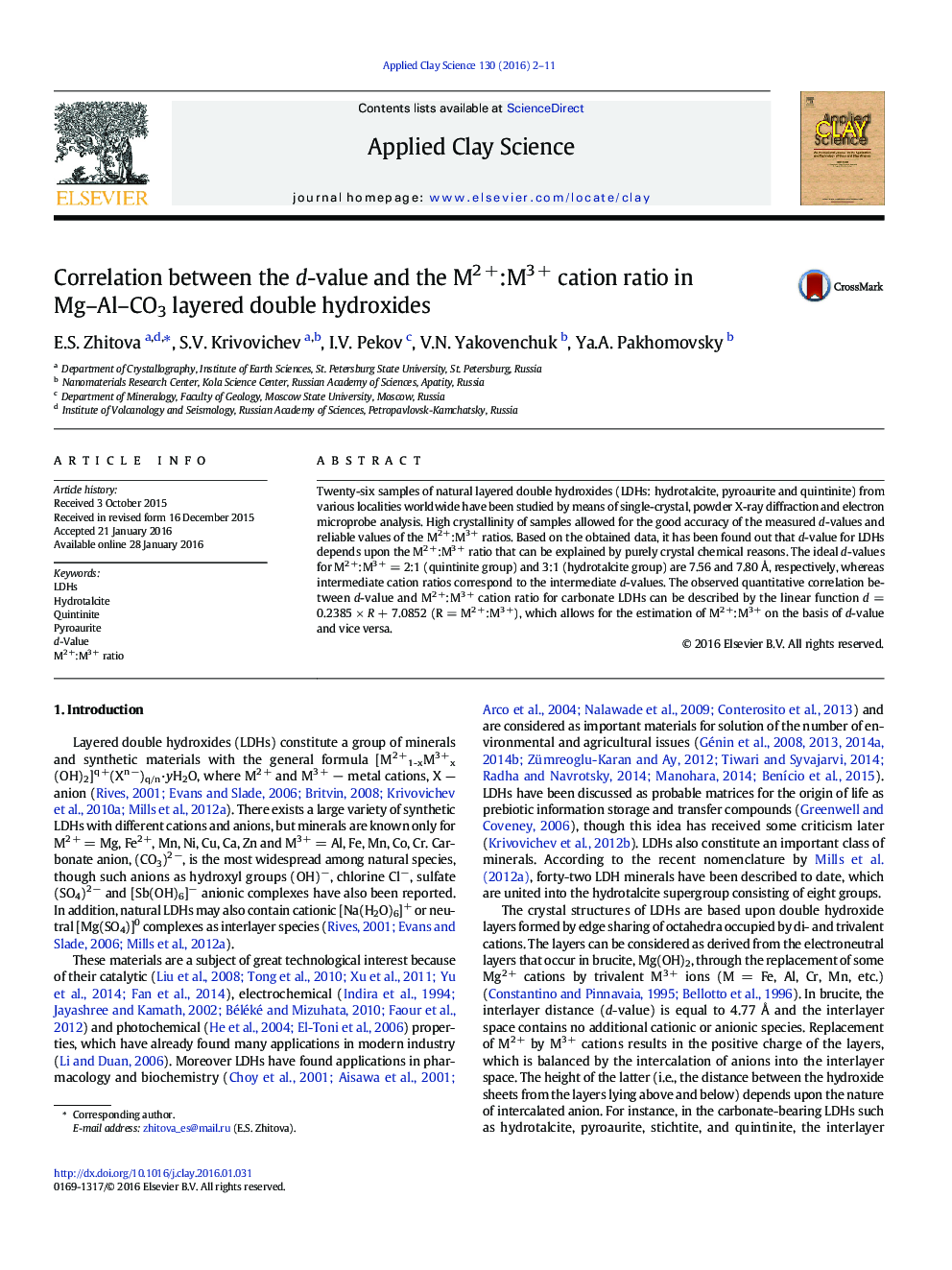| Article ID | Journal | Published Year | Pages | File Type |
|---|---|---|---|---|
| 1694004 | Applied Clay Science | 2016 | 10 Pages |
•Natural LDHs: quintinite, hydrotalcite, pyroaurite were studied by single-crystal and powder XRD.•The d-value was refined by single-crystal and powder data for Mg–Al–CO3 and Mg–Fe–CO3 natural LDHs.•d-Value increases with the increase of the M2 +:M3 + ratio.•2:1 and 3:1 LDHs can be distinguished by XRD on the basis of d-value (mineral identification).•The provided equation allows M2 +:M3 + ratio on the basis of d-value for CO3-bearing LDHs.
Twenty-six samples of natural layered double hydroxides (LDHs: hydrotalcite, pyroaurite and quintinite) from various localities worldwide have been studied by means of single-crystal, powder X-ray diffraction and electron microprobe analysis. High crystallinity of samples allowed for the good accuracy of the measured d-values and reliable values of the M2 +:M3 + ratios. Based on the obtained data, it has been found out that d-value for LDHs depends upon the M2 +:M3 + ratio that can be explained by purely crystal chemical reasons. The ideal d-values for M2 +:M3 + = 2:1 (quintinite group) and 3:1 (hydrotalcite group) are 7.56 and 7.80 Å, respectively, whereas intermediate cation ratios correspond to the intermediate d-values. The observed quantitative correlation between d-value and M2 +:M3 + cation ratio for carbonate LDHs can be described by the linear function d = 0.2385 × R + 7.0852 (R = M2 +:M3 +), which allows for the estimation of M2 +:M3 + on the basis of d-value and vice versa.
Graphical abstractFigure optionsDownload full-size imageDownload as PowerPoint slide
